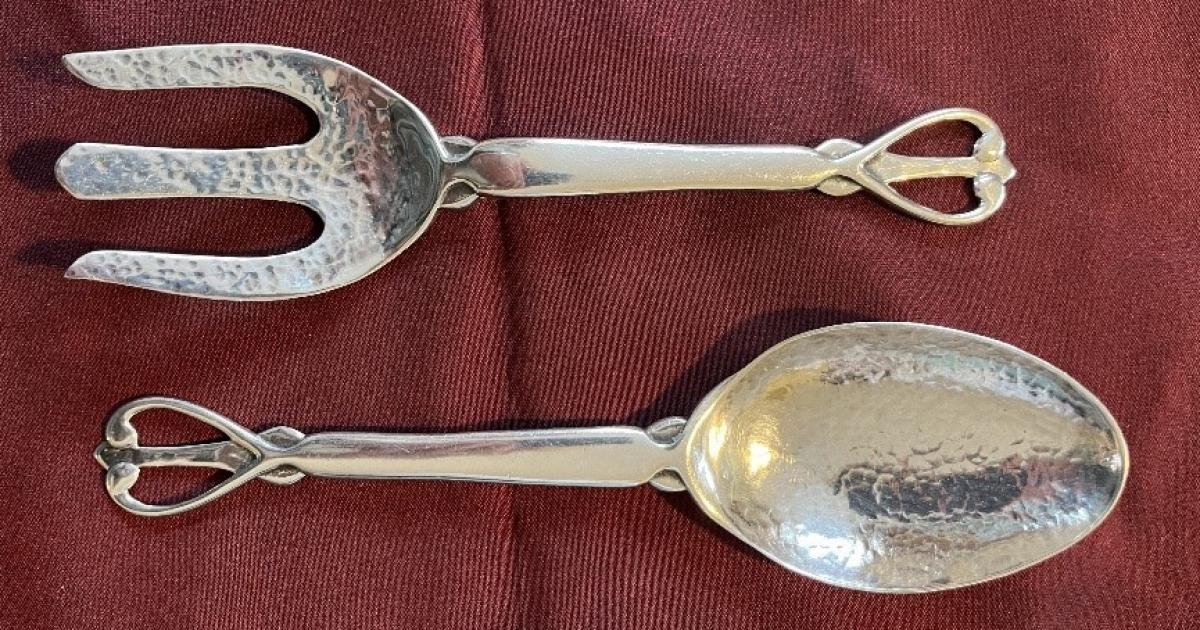Things must be handmade; they must show how they are made; the materials must be respected, and, importantly, the maker must also be respected.
As such, the Arts & Crafts Movement was as much a social experiment as an artistic endeavour.
It offered women the chance to establish themselves as makers as well as designers in previously male-dominated practices such as metalwork, silversmithing, enamelling and jewellery making, as well as the more traditionally ‘womanly’ crafts such as needlework and weaving.

May Hart Partridge specialised in enamelling.
She would go on to enamel silver work by C R Ashbee and Harold Stabler, amongst others, and would become an active member of the Guild of Handicrafts.
She is best known for the extraordinary enamel-on-copper portrait miniatures that she produced, examples of which are held by the Victoria & Albert Museum.
The changing status of women is found in the work of the silversmiths Louisa and Florence Rimmington; Louisa (born Sarah Louisa circa 1860) was aunt to Florence (1880–1916).
Florence studied at the Camden School of Art, where she later taught jewellery and enamelling, and eventually registered their own silver marks.
Louisa and Florence shared a joint makers’ mark.
The beautiful silver bowl shown here, hand-beaten and raised from a single sheet of silver, and finished with repoussé work of exceptional quality, was made in 1905.
Another example was Winifred King and Mildred Murphy, who met whilst at school.
Their business partnership seems to have been established by 1920 and was an active part of what is known as the ‘Arts & Crafts Revival’ period between the two world wars.
The business employed up to eight young female apprentices at a time.

The women practitioners described are by no means exclusive.
A more representative list would have to include designer-makers such as Amy Sandheim, Dorrie Nossiter, Sybil Dunlop, Phoebe Traquaire, Jessie Marion King, the Macdonald sisters, to name just a few.
Modern designers and makers working in the decorative arts today owe a great deal to the pioneering women of the Arts & Crafts Movement who took the opportunity afforded them by this unique social experiment and ran with it.
Expect to pay a premium for Arts and Crafts silver, especially from the more famous craftswomen.
Items of true Arts & Crafts from the early period are rare.
I am grateful for the help of Sarah Harris, sarahharris2460@gmail.com, an expert on Arts & Crafts artefacts.
Mike Hicks has run Stalham Antique Gallery at 29 High Street, Stalham (NR12 9AH) for more than 30 years. His business is open Mondays to Fridays from 9am-1pm and 2-4.30pm, and on Saturdays from 9am-1pm. You can contact Mike on 01692 580636 or info@mikehicksantiques.co.uk or www.mikehicksantiques.co.uk




